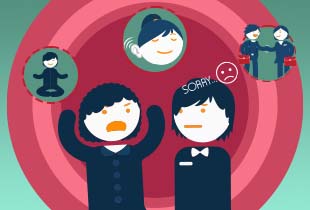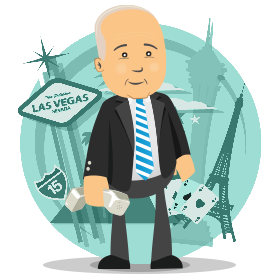

Related Articles
Related Articles
Handling Customer Complaints
Explore More
Customer Service Training
Workplace Health And Safety
Dealing With Customers Online
Business Phone Etiquette
Time Management
Learner Engagement
Prevent Customer Churn
Customer Satisfaction
Handling Customer Complaints
Sales Training
Angry customers. Almost all businesses have to deal with them – for all sorts of reasons.
When you find yourself in a situation where you have to handle an angry customer, there are a few simple steps to follow that will make the situation simpler, easier, and less frustrating for all involved.
You might even turn the situation around and find your angry customer is now a satisfied one!
1. Remain Calm
The most important step of all when dealing with an angry customer is to remain calm. This can be difficult, but it’s worth it every time.
Remember: your angry customer is reacting to the situation, not to you personally. They aren’t attacking you on a personal basis. If you don’t remain calm and the situation gets out of hand, your angry customer might resort to more targeted blame.
If that happens, simply walk away and have another colleague assist. Generally, angry customers react out of frustration and disappointment. Many other external factors that have nothing to do with you or your organisation can also play a role in their anger. Regardless of how unreasonable you may think.

2. Listen
Listening skills are critical in identifying an angry customer’s issue.
If they believe that you’re really listening to them, they’ll begin to calm down. It’s hard to remain angry with someone who is genuinely listening to you with the intent of helping.
Listen to them as if you’ll have to translate what they’re saying to another person.
Listen as intently as if you were at the UN translating a speech into another language!
Listening in this manner forces you to focus on the intent of what they’re saying and get the detail right. You’ll then start to develop a good understanding of your angry customers situation Understanding is the first step to finding a solution.

3. Confirm your understanding
Confirm your understanding of the issue in such a way that assures them you have listened and truly want to ensure that you have the facts.
Don’t speak at length, speak simply, clearly and calmly.
Be sure to use a calm tone, without patronising or being sarcastic or overly clever. You are a professional and can handle the angry customer by calmly confirming your understanding of the issue in a genuine manner.

4. Thank the customer
Once you’ve confirmed your understanding of the situation, thank your angry customer for bringing it to your attention.
This can be hard, especially if they’ve been rude or unreasonable, but if you thank them sincerely, they will begin to calm down.
Again, it’s hard to stay angry when someone is thanking you. You may find some customers begin to feel a bit foolish about their anger, reassure them it’s ok, you understand and are here to help them sort out the issue.

5. Provide a solution
The final step is to outline your solution to your angry customer’s problem.
Break your solution into a couple of points so that it’s clear what you intend to do. Then ask your angry customer if they’re happy for you to take this action. This will help them to feel a sense of control over the situation. It’s possible they will try to insist you do something different – but again, remain calm and explain to them what it is in your power to do about the situation.
As part of your solution, you must include how you’re going to ensure it actually happens. Generally, this involves some sort of follow up and a promise to confirm it’s actually happening at a later time.
It’s absolutely vital that you follow through on this and make sure the promised confirmation happens. An angry customer can be turned into a satisfied customer, but an angry customer who’s let down a second time will become a furious customer. Most likely, they’ll tell all their friends about their experience with your organisation, and soon after become an ex-customer.

Of course, there are some customers who you will not be able to satisfy, who are simply too rude, stubborn, or angry to deal with. In these situations it is ok to calmly let the customer know that if they continue to behave in that manner you will no longer be able to serve them and then calmly remove yourself from the location.
For further training on How to Deal with Angry Customers check out Canity’s online training platform.
Our series of videos details how to deal with various Customer Personality Types and specifically How to Deal With Difficult, Disappointed, Rude, Anxious and even Happy Customers.
Most Popular Blogs














Published by Canity